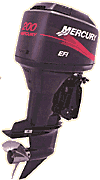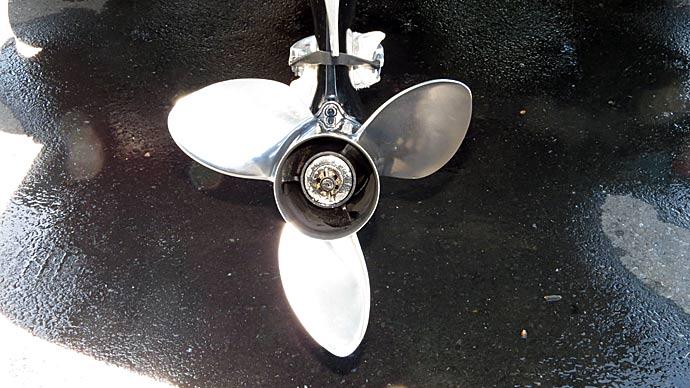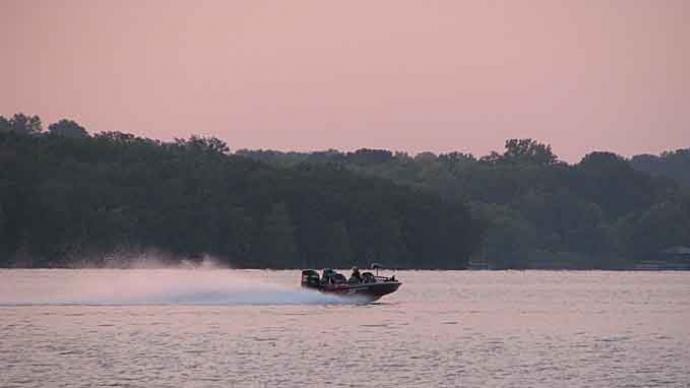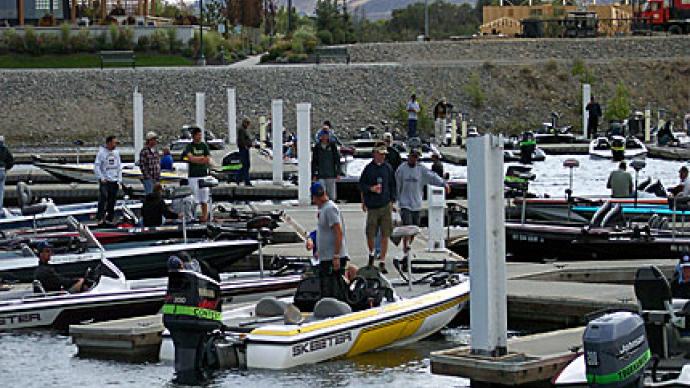
With the price of gasoline today, it is to our advantage to convert every nickel's worth of horsepower our motors produce to forward motion. This is easy to say, but achieving 100 percent efficiency from the prop on your outboard is far more complicated than anyone can put into words. However, we can all do a few things to keep our propellers in top shape and at their maximum potential.
The science of propeller design is quite complicated, and there are many varying views on which is best, but the fact remains that there are far more prop builders these days than there are motor manufacturers. Every motor manufacturer has its line of props, which most of us run because that's what our boat dealer sells and recommends. When you buy a new boat or replace the motor on your old boat, the dealer will probably send the prop he thinks will work best and a second choice with you to the lake.
Don't take an empty boat to the lake to determine which prop will do the best job for your long-term needs. Fill the gas tank at least half full, load your rods and the tackle you plan to carry all the time and fill the livewell at least half full of water. This is how the boat will be run for most of its life. Why set it up for maximum performance empty and then load it down to fish from it?
By design, the balance point of most boats is approximately 60 percent of the length measured from the front. Today's boats are designed to carry the weight in the rear of the boat. If you measure your boat, I'll bet that 60 percent of the length falls on the line about even where your butt meets the seat, or at least in the console area. It is always better to load all the heavy stuff behind this line. Your boat will perform best with the nose up and all the weight being carried by the pad or at the boat's transom.
We all trim our motor full down coming out of the hole and then trim up to get the nose out and the boat's attitude where it runs at maximum efficiency. For every pound you load forward of your balance point, it will cost you at least one mile per hour in performance if your motor is using horsepower to lift the nose, it will not be there to produce the performance you are paying for. Water is drag. The more of your boat that touches the water or rides down in the water, the slower you go.
Here we enter into a choice, though. The super high-performance boats tend to have a wider, more concave pad and ride strokes that lift the boat out of the water better but tend to ride a little rougher than the narrow pad V-bottom boats. This is all a personal choice, but the prop you pick will be slightly different for each choice. Your boat dealer will have basic recommendations of a few props you can try on your boat.
Now the magic is to pick which prop will give you maximum efficiency with the least amount of slippage. I had an old boat racer tell me once that it's better to pull less pitch at maximum RPM than more pitch and lug your motor. Pitch is the distance a prop is designed to move your boat forward in one revolution at zero slippage. There are usually two numbers on every prop, the first is the diameter, and the second is the pitch. Every prop designer's goal is to eliminate as much slippage as possible. Thus there are as many different props as there are boats. It is to your benefit to pick the prop with the least amount of slippage and keep it maintained so this doesn't change.
A simple rule applies when it comes to performance on the water. Everything that runs in or on the water has to be sharp, and everything that runs in the air has to be round and smooth.
Now we come to the point where the horsepower meets the water. Most of today's boats are set up either by design or with a jack plate that surfaces the prop. If you lay a straight edge down the pad or the bottom of the boat, this line should extend out within three inches of the center line of the prop shaft. This means on top, trimmed out, and up to speed, at least one blade of a three-blade prop is out of the water at all times when the leading edge of the prop contacts the water, this edge has got to be sharp (as in the sharper, the better). You are losing efficiency if you've got rock dings, woodchopper marks, or anything restricting the edge from cleanly cutting into the water.
If the dings on your prop are small, you can repair them with a file. However, only gravel dings can be removed with a file. You must remember always to file the backside of the blade only. The backside will be slightly rounded and should sharpen down to a flat and sharp front side. I'm not saying you've got to have a razor-sharp edge, but it should be sharp enough that, for safety's sake, you should use a 2 x 2 or a wooden block to torque against when you put your prop back on. Always torque your prop nut to recommended torque and lock the prop nut. If you've got significant dings on your prop, the most reputable prop shops can rebuild the leading edge for you for under $75.00. When you consider you could waste that much gasoline in three weekends, and if repaired, you should see a noticeable performance difference, why not spend the money?
If you are experiencing cavitation or excess slippage coming out of the hole, have the prop shop put a little cup in the top 2/3 of the blades, this should cure your hole shot problems.
One last tip, before you put your prop back on, spray your prop shaft seal with silicone lubricant. This will lubricate the seal, and silicone will stop the oxidation that destroys the rubber in the seal.
You can check your prop's performance using the following formula: Pitch divided by gear ratio X RPM divided by 63360 X 60 at zero percent slippage. This would be your true GPS speed. If you multiply this number by .85, your speed should be at 15 percent slippage (see example below). If you're not running at 15 percent slippage or less, your setup is wrong, or you need to change your prop. Notice I referred to GPS miles per hour. A GPS unit is more accurate than any speedometer or radar unit.
And on the last note, practice safe boating techniques once you get the best performance from your prop. Significantly accelerated speeds are only good when you know you can safely maneuver, not on a crowded lake. Be sure to take one of the boating courses available before running down the lake to test the top end of your motor.
Until next time I hope I've helped you understand why prop maintenance is so essential. Smooth water and create your own luck.
Fred Wall would like to thank Pinpoint Positioning Systems, Stroker Boats, and Mercury High-Performance Outboards
| Example |
|
Boat/Motor with a 28-pitched prop, 1.62 gear ratio, running 6000 RPM 28 divided by 1.62 = 17.28 17.28 x 6000 RPM = 103680 (your inches per minute) 103680 divided by 63,360 (number of inches in a mile) = 1.63 (miles per minute) 1.63 x 60 (minutes per hour) = 97.8 MPH97.80 x.85 = 83.13 MPH @ 15% slippage |




